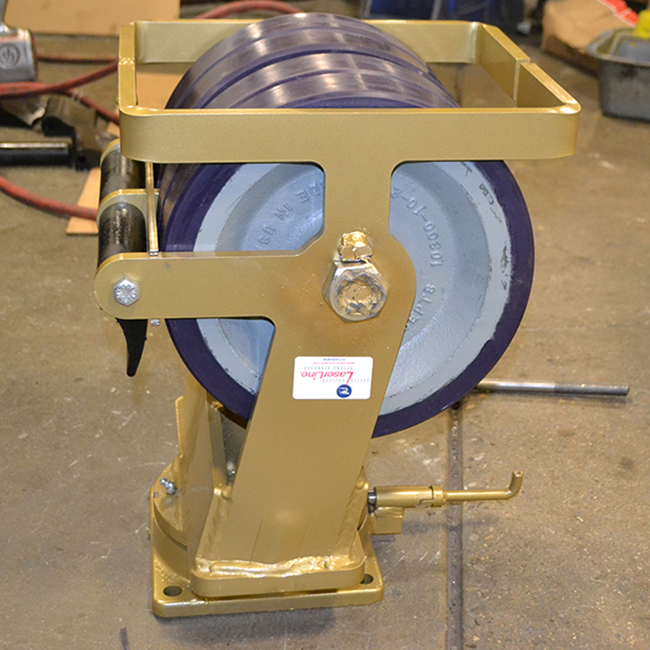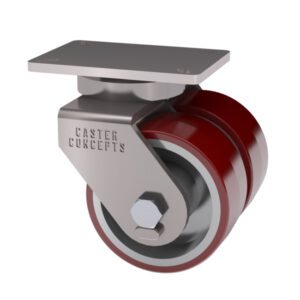

Many customers ask: “What is the advantage of a caster having two wheels instead of one?” This question typically comes up when someone is looking for one of 2 things: They either want to improve the ease of movement on their carts, or they are looking to move something that they think is a hefty load.
A dual wheel caster may help in both cases.
There can be some confusion in applications where people attempt to increase the ease of movement. A dual wheel isn’t going to help in reducing the amount of initial push or pull force that it takes to move your application. However, where a dual wheel will make movement easier than a single wheel is when your application is turning. Having two wheels in the same caster rig allows each wheel to rotate independently, allowing them to spin at different rates of speed. This will decrease the amount of scrubbing caused by the wheels during a turn.
 The number one advantage of a dual-wheel caster compared to a single-wheel caster is the much larger load capacity it supports. This can come in handy when you can’t exceed certain height restrictions. Instead of using a larger wheel and therefore producing a larger caster with more height, we can take two wheels that are the same size and place them next to one another in the same caster. This method helps you reach the necessary load capacity at a lower overall height.
The number one advantage of a dual-wheel caster compared to a single-wheel caster is the much larger load capacity it supports. This can come in handy when you can’t exceed certain height restrictions. Instead of using a larger wheel and therefore producing a larger caster with more height, we can take two wheels that are the same size and place them next to one another in the same caster. This method helps you reach the necessary load capacity at a lower overall height.
For example, let’s say you have a 12-inch height restriction and need a caster that will support 5,000 pounds. Using a single-wheel caster exceeds the 12 inches in height required to support that load, so that won’t work. With a dual-wheel caster — where the wheel’s material is the same as the single wheel — we can now support that 5,000-pound load and stay below a 12-inch overall height for the caster.
Essentially, the dual wheel caster is creating a larger footprint. The footprint is the surface area the wheels touch at any given time. This allows the distribution of the load’s weight to be over roughly twice the surface area of a single wheel. That disbursement causes less stress over a larger surface area than a single wheel’s footprint for the same load.
Some of the best applications for dual-wheel caster use include tow lines, industrial platform trucks, rugged industrial functions, severe abuse applications, and die handling. Automotive, aerospace, marine, and ground support equipment industries can be some of the most common areas for dual-wheel caster use. Many of the accessory options are still available for dual-wheel casters. This allows the installation of standard parts such as brakes, swivel locks, and toe guard application needs or safety requirements.